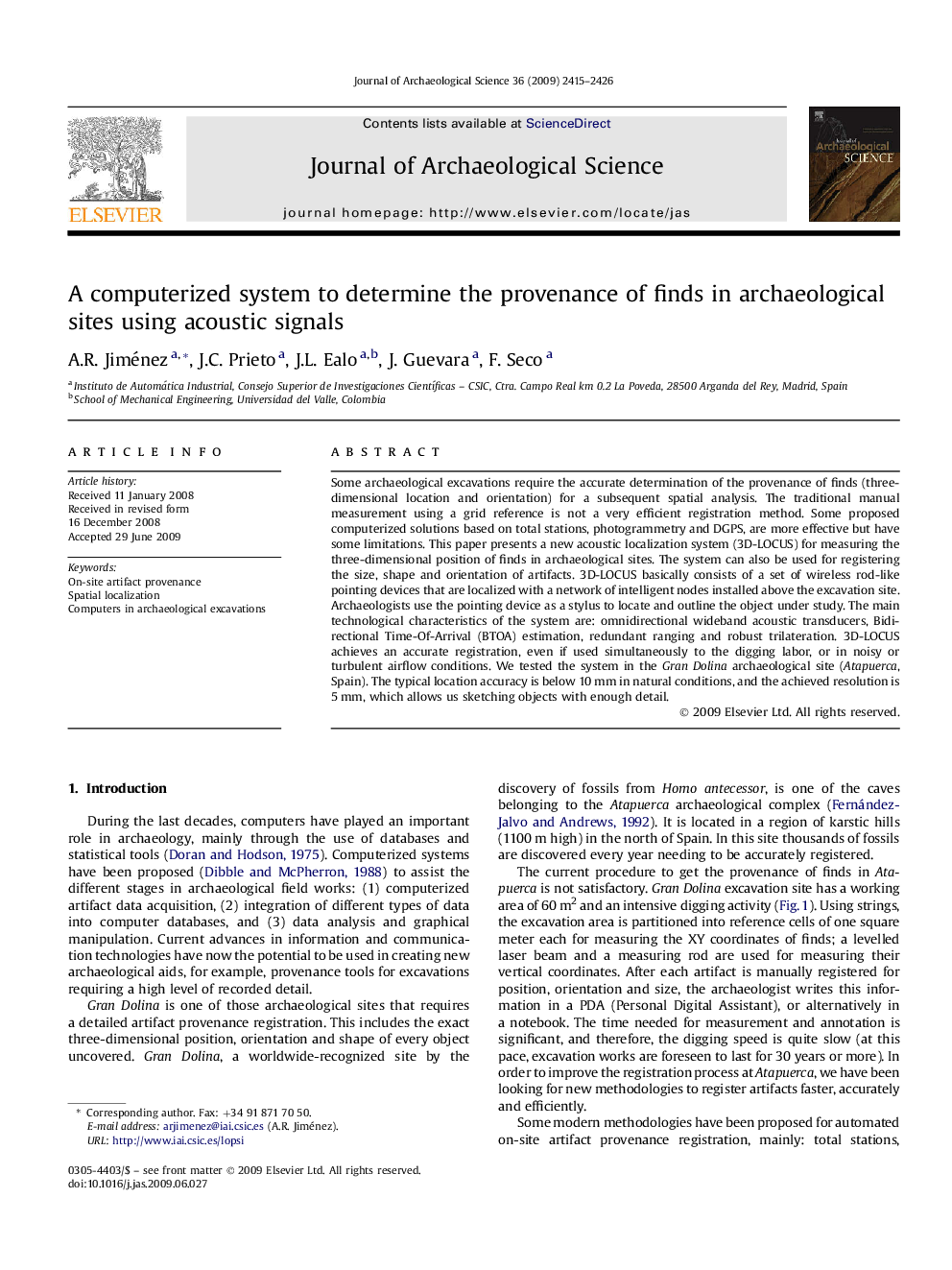| Article ID | Journal | Published Year | Pages | File Type |
|---|---|---|---|---|
| 1036415 | Journal of Archaeological Science | 2009 | 12 Pages |
Some archaeological excavations require the accurate determination of the provenance of finds (three-dimensional location and orientation) for a subsequent spatial analysis. The traditional manual measurement using a grid reference is not a very efficient registration method. Some proposed computerized solutions based on total stations, photogrammetry and DGPS, are more effective but have some limitations. This paper presents a new acoustic localization system (3D-LOCUS) for measuring the three-dimensional position of finds in archaeological sites. The system can also be used for registering the size, shape and orientation of artifacts. 3D-LOCUS basically consists of a set of wireless rod-like pointing devices that are localized with a network of intelligent nodes installed above the excavation site. Archaeologists use the pointing device as a stylus to locate and outline the object under study. The main technological characteristics of the system are: omnidirectional wideband acoustic transducers, Bidirectional Time-Of-Arrival (BTOA) estimation, redundant ranging and robust trilateration. 3D-LOCUS achieves an accurate registration, even if used simultaneously to the digging labor, or in noisy or turbulent airflow conditions. We tested the system in the Gran Dolina archaeological site (Atapuerca, Spain). The typical location accuracy is below 10 mm in natural conditions, and the achieved resolution is 5 mm, which allows us sketching objects with enough detail.
